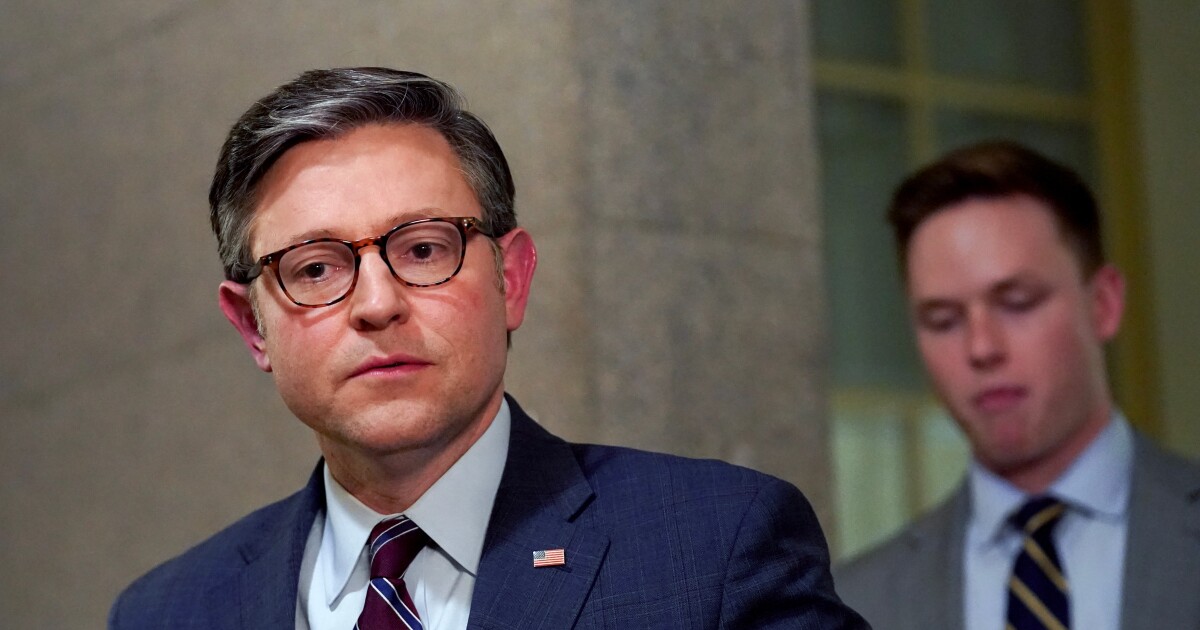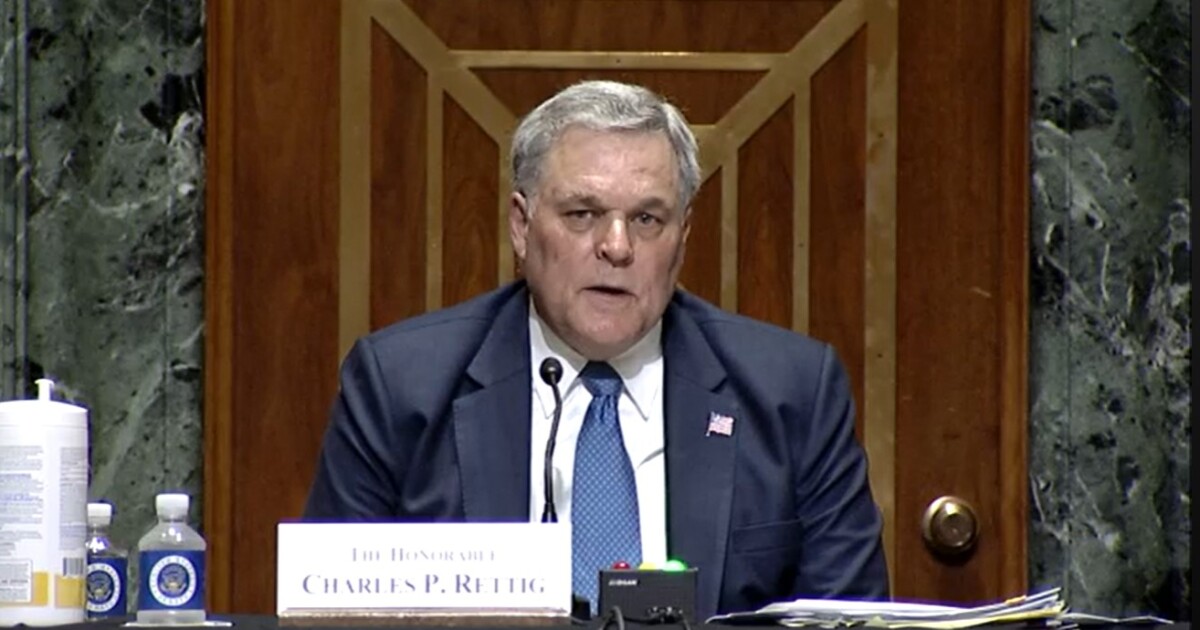House Republicans announced a spending bill to keep government agencies open through Sept. 30, daring Democrats to vote against it and risk a disruptive March 15 shutdown.
The move tees up a dramatic confrontation on Capitol Hill next week and threatens to further fuel uncertainty for a federal workforce roiled by swift and aggressive cuts made by billionaire Elon Musk.
Speaker Mike Johnson will attempt to hold the fractious Republican majority together and muscle the 99-page bill through the House on Tuesday, likely without help from Democrats. But the bill would still need the help of moderate Democrats in the Senate, where the legislation would stall without 60 votes.
Neither party, however, has shown an appetite for a shutdown. If the bill fails in either chamber, Congress is likely to pass a temporary bill to buy additional time to forge a compromise that has eluded lawmakers since the fiscal year began in October.
President Donald Trump called on Republican lawmakers to pass the bill next week, warning them to allow “NO DISSENT” in their ranks.
“I am asking you all to give us a few months to get us through to September so we can continue to put the Country’s ‘financial house’ in order,” Trump said on his Truth Social network.
Democrats have tried to leverage the spending bill to put constraints on Musk and his so-called Department of Government Efficiency. Republicans, who hold the majority in both chambers, have resisted. The stopgap bill was crafted in consultation with the White House.
The stopgap bill would allow the Trump administration “to continue the DOGE efforts finding all these extraordinary levels of savings, and waste, fraud and abuse,” Johnson told Fox News on Friday. “We’ll be able to incorporate that into the budgeting for FY 26 which will start almost immediately after we’re done next week.”
Representative Rosa DeLauro, the top Democrat on the House Appropriations Committee, said she opposed the bill because it would allow Musk to continue making cuts, overriding the will of Congress.
“By essentially closing the book on negotiations for full-year funding bills that help the middle class and protect our national security, my colleagues on the other side of the aisle have handed their power to an unelected billionaire,” she said in a statement.
The bill would slightly decrease overall discretionary spending through the end of the fiscal year on Sept. 30. The bill, Trump signaled in remarks earlier this week, paves the way for his more sweeping legislative priorities: a proposed $4.5 trillion tax cut over the next decade paired with $2 trillion in spending cuts aimed at entitlement programs.
“Conservatives will love this Bill because it sets us up to cut Taxes and Spending in reconciliation, all while effectively FREEZING Spending this year,” Trump said on Truth Social Wednesday as the bill was being drafted. “Let’s get this Bill done.”
South Carolina Republican Senator Lindsey Graham said on Fox News Sunday that while he didn’t want the government to shut down, the bill “is terrible on defense and the border. I want to commit what we’re going to have more money for border and defense before I vote for” it.
The vote will test whether Johnson and Trump can wrangle GOP conservatives who have never voted for a stopgap funding measure. Conservative hard-liners have pledged to seek deep, permanent cuts to federal agencies in fiscal 2026 once Musk’s cost-cutting crusade is complete.
The GOP cannot afford much opposition, given the narrow House majority. Already conservative Thomas Massie of Kentucky, who opposes stopgap bills without automatic spending cuts, has said he will vote against it. The bill contains new funding to boost immigration enforcement that the White House requested.
The bill extends a host of expiring health programs from April 1 to Sept. 30, including Medicare coverage of telehealth consultations with doctors and funding for community health centers.
Republican leaders have already wooed defense hawks in the party worried about a freeze on Pentagon spending. They’re planning to use a separate GOP-only tax cut package to add $100 billion in military spending.
The stopgap bill would boost defense spending by $6 billion while cutting non-defense spending by $13 billion relative to current levels, resulting in an overall spending cut, according to a House Republican leader’s aide. It contains no lawmaker pet projects known as earmarks.
Part of the defense boost goes toward a pay increase for military troops authorized by Congress last year.
The bill goes into detail on which weapons systems account should be newly funded. Top Senate Republican appropriator Susan Collins told reporters she doesn’t support giving the Pentagon a blank check to decide which contracts to initiate.
Armed Services Chairman Mike Rogers and other hawks also secured flexibility for the Pentagon in the bill to boost the military’s ability to make new weapons purchases, which would typically not be allowed under a continuing resolution.
The bill would grant the Pentagon the ability to transfer money into new accounts. The flexibility could allow for spending on new Virginia-class submarines and ships built by General Dynamics Corp.’s Electric Boat and HII’s Newport News Shipbuilding.
Democrats are lining up to oppose the stopgap measure because it would freeze spending. The bill would also claw back $20.2 billion in spending for the Internal Revenue Service passed as part of President Joe Biden’s signature green-energy Inflation Reduction Act. Democrats say that is a poison pill that they cannot support because it would boost tax cheating by the wealthy.
Democrats said a spending freeze effectively cuts crucial benefits.
House Democratic leader Hakeem Jeffries said in a letter the Republican measure “threatens to cut funding for health care, nutritional assistance and veterans benefits through the end of the current fiscal year. That is not acceptable.”
The minority party prefers a short-term bill to avoid a shutdown at the end of next week in order to allow talks to continue on detailed appropriations bills allowing 1% growth to defense and non-defense spending. The stopgap bill is below 1% spending cap increases approved in a bipartisan 2023 bill.
A House Republican aide said the bill has increases for veterans benefits, housing assistance and fully funds food assistance for women and children.


 Economics1 week ago
Economics1 week ago
 Accounting1 week ago
Accounting1 week ago
 Economics1 week ago
Economics1 week ago
 Economics1 week ago
Economics1 week ago
 Economics1 week ago
Economics1 week ago
 Economics1 week ago
Economics1 week ago
 Personal Finance7 days ago
Personal Finance7 days ago
 Economics1 week ago
Economics1 week ago












